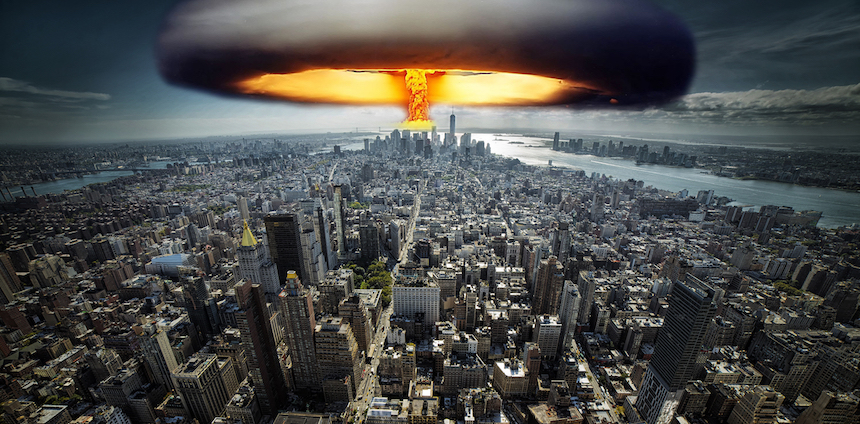
The world is not prepared to deal with the devastating effects of a thermonuclear attack, according to Cham Dallas, professor of public health and director of the Institute for Disaster Management at the University of Georgia.
Dallas said that the development of a hydrogen bomb by North Korea is a transformative event, especially from the point of view of the medical and public health response to a thermonuclear detonation.
“H-bombs, or thermonuclear weapons, are at least 10 times more destructive than the Hiroshima and Nagasaki sized weapons,” said Dallas. “Of particular horrifying interest is the fact that thermal burn casualties are much higher with these weapons, with one H-bomb producing more burn victims than there are burn beds in all the hospitals in the North American continent.”
UGA says that Dallas and his colleagues have nuclear war medical casualty simulations that have been published in scientific journals for the following cities for both H-bombs and Hiroshima-sized bombs: New York, Chicago, Atlanta, Washington, D.C., Houston, Los Angeles, Tehran and Tokyo.
“Surprisingly, discussions of the medical and public health consequences of nuclear war with weapons of any size rarely enters into diplomatic discussions of the proliferation of nuclear weapons,” Dallas said. “These conversations almost always revolve around diplomatic, political, military and economic factors and increasingly around personalities. As important as these may be, there is a disturbing and almost total avoidance of the reality of the terrifying health care consequences of what we are going to face.”
These concepts have been presented in multiple international meetings, with the resulting expression of a lot of interest in the need for global cooperation to not only respond to such events, but also to help prevent them.
Dallas has published numerous papers in peer-reviewed scientific literature on the medical and public health aspects of nuclear war, and in recent years this has focused on the need for a global health workforce to respond to this impending crisis.
“No one really knows what the actual effects will be of a thermonuclear device being detonated in a big city—it has never happened before,” he said. “The nuclear war casualty simulations that we do here at UGA and which are done by the various global governments are scientific simulations based on assumptions. It will be like nothing anyone has ever seen before.”
In international relations with nuclear war, he has addressed the UNthree times on this topic, led twelve expeditions to the most highly contaminated areas at Chernobyl, and six expeditions to the Exclusion Zone at Fukushima. Dallas has a high-level delegation of his counterparts from China coming from their CDC to his UGA institute in January for several weeks for these nuclear war medical response collaboration discussions.
“There is a terrifying nuclear arms race going on in Asia, in which the North Korea developments are only the tip of the iceberg,” Dallas said. “China is steadily expanding its nuclear arsenal. India and Pakistan are rapidly increasing the number of nuclear weapons in their arsenals, with perhaps 150 each and expanding by more than 10 percent a year. These two nations viscerally hate each other and have fought four brutal wars in the last 60 years, and now they are nuclear armed and just as belligerent as before. India is about to go thermonuclear, just as North Korea did over the weekend. There is talk of Japan going nuclear, which never used to occur, and now it is discussed openly there, and Japan has huge stockpiles of weapons grade nuclear material left from the 50 nuclear reactors they have been operating.”
In the wake of the Fukushima crisis, Dallas was co-host of a 40-episode television series titled “Public Health Impact.” He also had a one-hour documentary on his Chernobyl research broadcast on CNNon the tenth anniversary of the accident.
“The development of a thermonuclear device by North Korea vastly accelerates the fear of what an electromagnetic pulse device will be able to do to the U.S. Just one H-bomb that has been specifically designed to produce the EMP effect—as opposed to the typical nuclear detonation with blast, thermal and radiation effects—would emulate the science fiction movies that we considered only Hollywood imagination previously.”
This article published courtesy of Homeland Security News Wire


